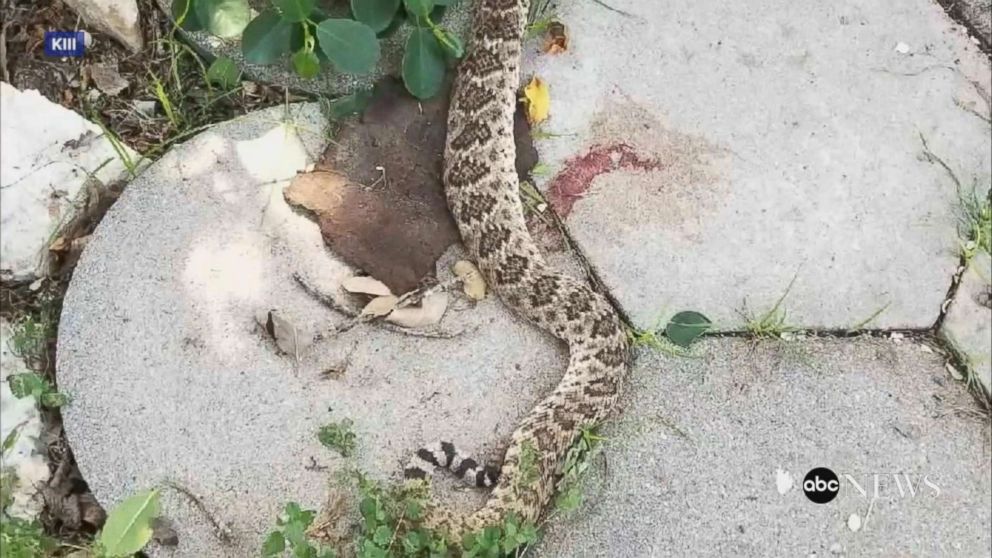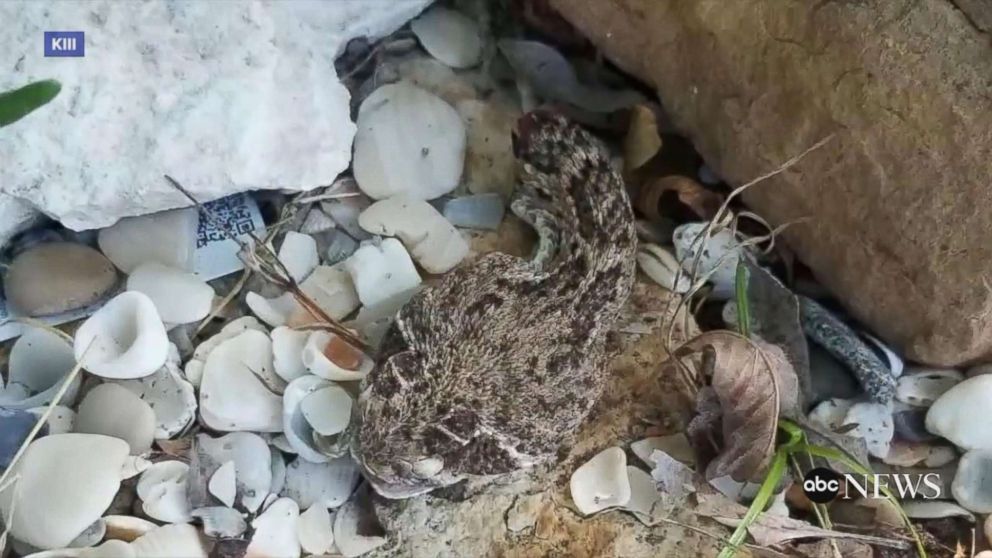Bodyless rattlesnake bites Texas man after it was decapitated
A Texas man is recovering after he was bitten in the hand by a rattlesnake he had just decapitated, ABC Corpus Christi affiliate KIII reported.
Jennifer Sutcliffe and her husband were doing yard work at their Corpus Christi home on May 27 when she spotted a 4-foot rattlesnake lurking nearby, she told the station.
Sutcliffe's husband grabbed a shovel and severed the snake's head. When he went to pick up the head to dispose of it, he was bitten.

The snake released all of its venom into Sutcliffe's husband, causing him to immediately experience seizures, loss of vision and internal bleeding. Photos from the incident show that his hand swelled up considerably and was covered in dark purple bruises.
Sutcliffe said the first 24 hours after the bite were the worst.
Doctors initially told Sutcliffe that her husband may not make it despite the large amounts of anti-venom they were giving him. A snake bite victim is usually administered two to four doses of the expensive antidote but Sutcliffe's husband was given a whopping 26 doses, she said.
Sutcliffe's husband is now in stable condition but is still experiencing weak kidney function, she said.

Snake heads have the capability of biting and injecting venom because some reflexive motion still remains even after they've been separated from the body, according to National Geographic.

Dying from a snake bite is rare, Michael Halpert, a trauma surgeon in Corpus Christi, told KIII.
"There are about 6,000 to 8,000 snake bites per year in the country, and 10 to 12 people die," he said.
Halpert warned people not to suck the venom out themselves.
"You just want to keep the victim calm, keep the bitten area above the level of the heart slightly, and get the patient to the nearest emergency room," he said.



